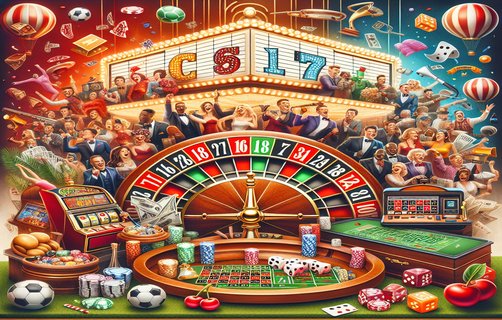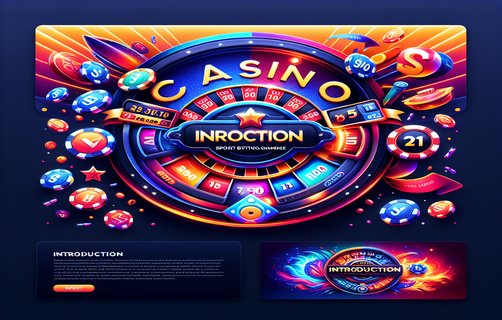Mastering Teen Patti: Navigating the Intricacies of Betting Strategies
टीन्स पट्टी: बाज़ी लगाने की रणनीतियों का महारथी
In the high-stakes world of Teen Patti, players often find themselves tangled in a web of strategies that could sway the outcome from one hand to the next. Overestimating opponent bluffs is a common pitfall for many. Skilled players, acknowledging that opponents may occasionally feign weakness, take reckless decisions based on perceived weaknesses, which can lead to serious bankroll losses. A balanced approach is essential. By recognizing when an opponent is blustering versus when they're holding a competitive hand, players can position themselves strategically to capitalize on mistakes.

Risk-reward fluctuation plays a pivotal role in strategizing betting behaviors. Players must navigate between playing conservatively with strong hands and aggressively when bluffing. The dynamics of Teen Patti’s betting often create an illusion of high risk while the potential rewards can justify those risks, especially when the perceived strength of hands is low. Players who master this fluctuation can extract value from both the risk-taker and the cautious player.
Betting tendencies can reveal a lot about an opponent's mindset. Passive players are likely to play it safe, while aggressive players may make larger bets, seeking to force others to fold. Understanding these tendencies allows players to adjust their own strategies accordingly. For example, facing a passive player on a strong hand might encourage you to extract value through smaller bets, tempting them to stay longer in the hand without scaring them off.
Additionally, the passive bluff becomes an art form in its own right. By betting smaller amounts, a player may appear less threatening yet still push opponents to doubt their hands. This often leads to the opponent making a misstep. Coupled with undercard odds, where the expected value of a lower-ranking hand offers unexpected wins, players who understand these probabilities can take calculated risks that often pay off despite the apparent odds.
Adjusting bet sizes becomes an important skill in maximizing wins. A well-timed increase can signal strength or bluff effectively. Gradually learning when to adjust, be it through observing player behavior or adapting to the table dynamics, can swing the game in a player’s favor. For instance, firing a large bet after an opponent shows weakness can force them to reassess their hand, shifting the table dynamics to your advantage.
As players explore the intricacies of Teen Patti, they should work on developing a blend of aggression and caution tailored to their opponents. Understanding when to up the stakes and when to hold back is fundamental. It’s this delicate balance that defines a successful player in the suspenseful game filled with psychological warfare and calculated risks.

टीन्स पट्टी की उच्च-दांव वाली दुनिया में, खिलाड़ी अक्सर एक ऐसे जाल में उलझ जाते हैं जो एक हाथ से अगले हाथ में परिणाम को प्रभावित कर सकता है। प्रतिकारी ब्लफ्स का अधिक आकलन करना कई लोगों के लिए एक सामान्य खामी है। कुशल खिलाड़ी, यह मानते हुए कि प्रतिकारी कभी-कभी कमजोरी का दिखावा कर सकते हैं, ऐसे फैसलों को लेते हैं जो अनुमानित कमजोरियों पर आधारित होते हैं, जिससे बैंक रोल का गंभीर नुकसान हो सकता है। एक संतुलित दृष्टिकोण आवश्यक है। जब खिलाड़ी यह पहचानते हैं कि प्रतिकारी कब धाक जमा रहा है और कब वह प्रतिस्पर्धात्मक हाथों को धारण कर रहा है, तो वे अपनी रणनीतिक स्थिति को गलतियों का लाभ उठाने के लिए समायोजित कर सकते हैं।
जोखिम-इनाम का उतार-चढ़ाव रणनीतिक बाज़ी व्यवहार की महत्वपूर्ण भूमिका निभाता है। खिलाड़ियों को मजबूत हाथों के साथ संयम से खेलने और ब्लफिंग करते समय आक्रामकता से खेलने के बीच में नेविगेट करना चाहिए। टीन्स पट्टी की बाज़ी अक्सर उच्च जोखिम का भ्रम पैदा करती है जबकि संभावित पुरस्कार उन जोखिमों को सही ठहरा सकते हैं, विशेष रूप से जब हाथों की ताकत कम होती है। जो खिलाड़ी इस उतार-चढ़ाव को समझ लेते हैं, वे जोखिम-उठाने वाले और सतर्क खिलाड़ियों से मूल्य निकाल सकते हैं।
बाज़ी लगाने की प्रवृत्तियाँ प्रतिकारी की मानसिकता के बारे में बहुत कुछ बता सकती हैं। पैसिव खिलाड़ी सुरक्षित खेलने की संभावना रखते हैं, जबकि आक्रामक खिलाड़ी बड़े दांव लगाकर दूसरों को फोल्ड करने के लिए मजबूर कर सकते हैं। इन प्रवृत्तियों को समझने से खिलाड़ियों को अपने खुद के रणनीतियों को तदनुसार समायोजित करने की अनुमति मिलती है। उदाहरण के लिए, एक मजबूत हाथ के साथ पैसिव खिलाड़ी का सामना करते समय छोटे दांव के माध्यम से मूल्य निकालना उन्हें अपनी पकड़ में बनाए रखने के लिए प्रेरित कर सकता है।
साथ ही, पैसिव ब्लफ एक कलाकृति बन जाता है। छोटे दांव लगाकर, एक खिलाड़ी कम धमकी वाला दिखता है फिर भी प्रतिकारी को संदेह करने के लिए मजबूर कर सकता है। इससे आक्रामकता के बावजूद गलत कदम उठाने की संभावना बढ़ जाती है। इसके साथ, अंडरकार्ड ऑड्स, जहां कम रैंक वाला हाथ अप्रत्याशित जीत प्रदान करता है, उन खिलाड़ियों के लिए सही होते हैं जो इन संभावनाओं को समझते हैं।
बाज़ी के आकार को समायोजित करना जीत को अधिकतम बनाने में एक महत्वपूर्ण कौशल बन जाता है। सही समय पर वृद्धि सिग्नल या प्रभावी ब्लफ का संकेत दे सकती है। जब भी खिलाड़ी प्रदर्शन करते हैं, अपने व्यवहार का अवलोकन करने या तालिका की गतिशीलता के अनुसार समायोजित करने हेतु इसे सीखे, तो गेम उनके पक्ष में घूम जाता है। उदाहरण के लिए, एक प्रतिकारी की कमजोरी दिखाने के बाद एक बड़ा दांव लगाकर उन्हें उनके हाथ का पुनर्मूल्यांकन करने के लिए मजबूर किया जा सकता है, तालिका की गतिशीलता को आपके फायदे में मोड़ सकता है।
जैसे-जैसे खिलाड़ी टीन्स पट्टी की जटिलताओं का अन्वेषण करते हैं, उन्हें अपने प्रतिकेदाओं के अनुसार आक्रामकता और सतर्कता का संयोजन विकसित करने के लिए काम करना चाहिए। दांव बढ़ाने और जब वापस रहने का समय होता है, यह एक निजीकृत कुशल खेल का आधार है। यही संतुलन सफल खिलाड़ी की पहचान करता है, एक ऐसा खेल जो मनोवैज्ञानिक युद्ध और उद्धृत जोखिमों से भरा होता है।

comments
GamblerGuru
This article provides great depth on betting strategies in Teen Patti!
AcePlayer22
I never thought about the psychology behind the betting tendencies. Very enlightening!
BluffMaster
The section on adjusting bets really opened my eyes. Will try it out next game.
LuckBeater
Totally agree on passive bluffs! They’ve worked for me multiple times.
StrategySeeker
Risk-reward analysis is crucial in any card game. Loved how it was explained.
HighStakesHank
Understanding undercard odds can be a game changer – great insight!